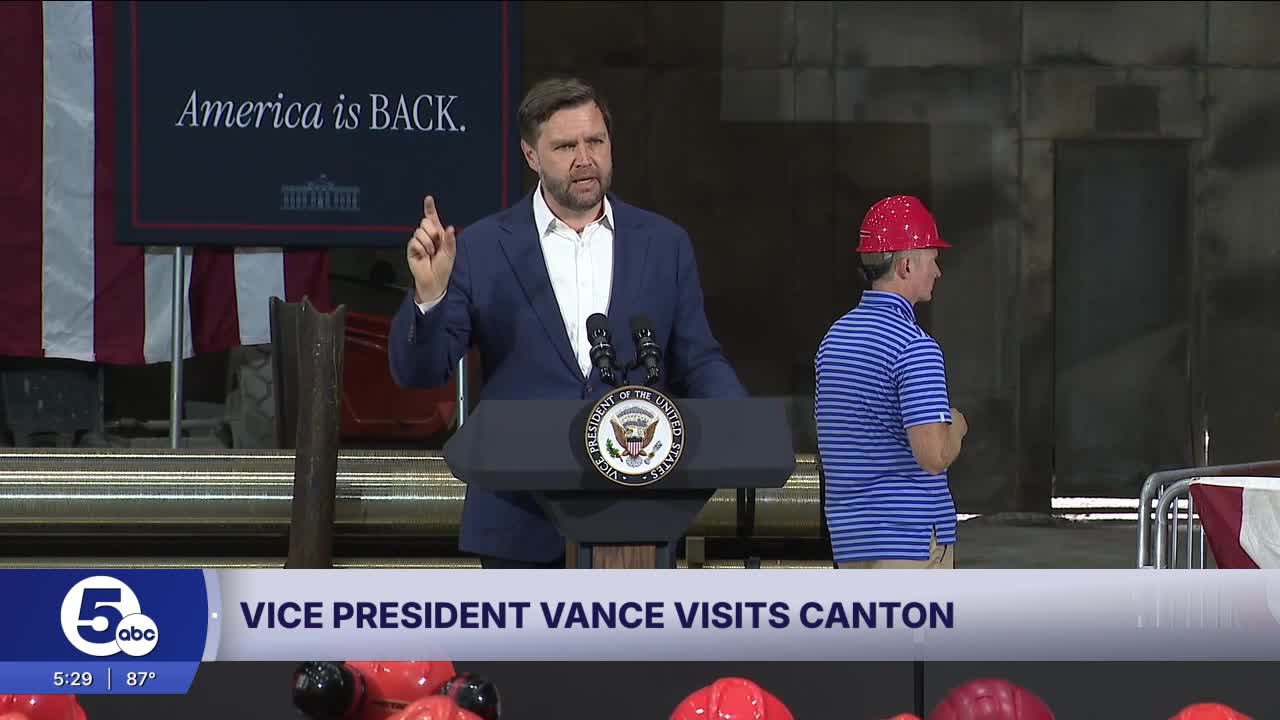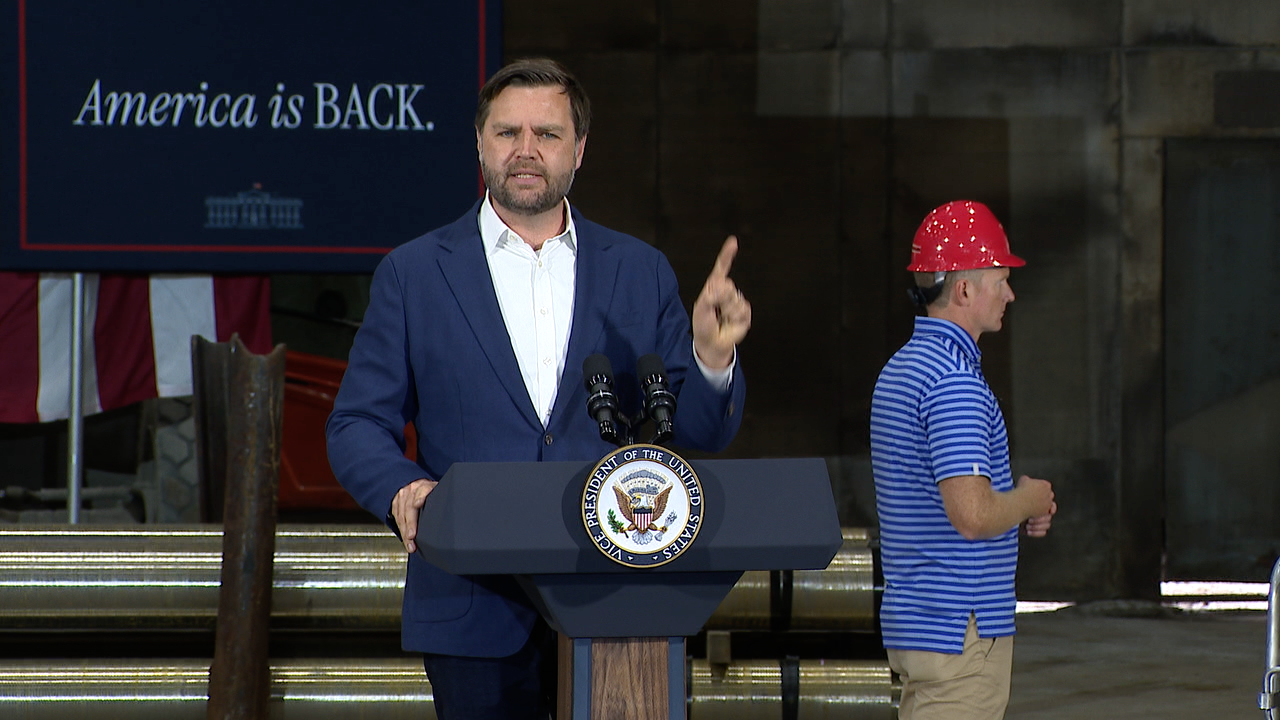On Monday, Vice President JD Vance spoke at a steel plant in Canton and touted President Donald Trump's 'Big Beautiful Bill.' He also took a few questions from the press.
Watch here:
Vance spoke about how the administration believes the bill benefits families and businesses in the country.
He was joined by state lawmakers, U.S. Reps. Max Miller and Michael Rulli, as well as workers from the Metallus steel plant.
"We are going to reward companies for investing in the United States of America, and we're going to punish companies for building in China and Mexico," Vance said to applause.
The legislation allows companies to get tax breaks faster, which Vance says could incentivize U.S. production. The administration has also been threatening tariffs on foreign products for months now. Factory worker Justin Rice said this could help American labor.
"It really projects the hope and the optimism that, really, the administration is pushing," Rice told us. "We make a lot of steel, not only for the military, but also for the automotive and oil industries. It's important to get steel from the states, not just from overseas."
But the main aspect of the bill is codifying tax changes that Trump made in his first administration into law. The 900-page package includes a $4.5 trillion extension of tax cuts.
RELATED: Trump signs his 'big, beautiful bill' during July 4 celebration
Roughly $350 billion is earmarked for national security initiatives, including funding to expand Trump’s deportation agenda.
The bill also allows many workers to deduct tips and overtime pay from their taxable income. Most Americans earning $75,000 or less would be eligible for deductions of up to $6,000.
But with tax cuts across the board — something has to give.
"Access to healthcare cut off," Ohio Senate Minority Leader Nickie Antonio (D-Lakewood) said in June, referencing the BBB and state budget.
Antonio said that not only was Medicaid slashed in the budget, but there are now additional work requirements. For the majority of Medicaid recipients under 65, they will need to prove that they worked at least 80 hours per month.
"We're very concerned that some of the rural hospitals may not be able to stand," she said.
Data from the Congressional Budget Office and nonpartisan research organizations estimate that more than 10 million people nationwide will be affected. The Ohio Department of Medicaid didn't respond to comment.
"There are hundreds of thousands of Ohioans that are at risk, right now, of losing access to Medicaid despite really wanting to work, but they can't. What do you say to those hundreds of thousands of Ohioans that say they will have no health insurance?" I asked Vance.
"Well, what I'd say to those Ohioans is one, don't believe every false media report that you've heard because our explicit goal in the Trump administration is to protect people's health care so long as they're working hard, playing by the rules... What I'd say to people is 'If you're looking for work, we're gonna help you look for work.'"
The live stream included above contains the rest of Vance's response.
The Medicaid changes will be phased in over the coming years.
There were also major changes to the work requirement exemptions for food stamps, SNAP, eliminating veterans and people facing homelessness from the exceptions list. It also increases the work requirements for the elderly. It raises the age for work requirements up to 64, and changes exemptions for parents to only those with children under 14.
The Ohio Department of Jobs and Family Services told us Monday that they aren't sure how many people these changes could impact.
"Like most public assistance programs, each individual’s eligibility is going to be determined based on their specific circumstances," spokesperson Bill Teets said. "As far [as] timing of these changes, we are still awaiting guidance from Food and Nutrition Services, the federal agency that runs SNAP."
The nonpartisan organization Center for Community Solutions estimated that more than 130,000 Ohioans will face a cut of about $100 a month.
Follow WEWS statehouse reporter Morgan Trau on Twitter and Facebook.







